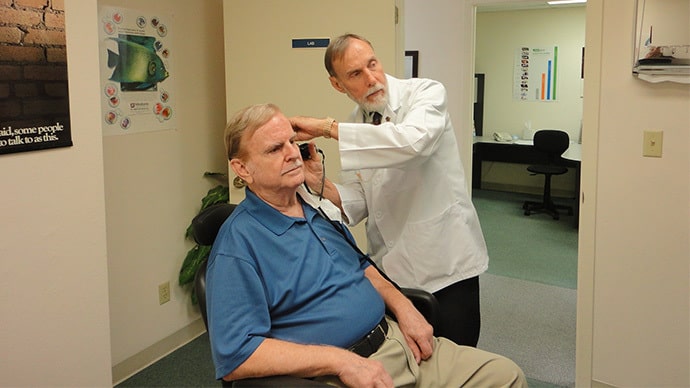What is Tinnitus?
Tinnitus is perceived noises or ringing of the ear that originates from the auditory cortex. Tinnitus is not a disease but a symptom associated with hearing loss.
In many cases tinnitus causes a minor irritation. However, it can at times have adverse effect on the patient’s quality of life by causing severe distress, affecting concentration, and causing insomnia and depression.
Tinnitus would usually get better on its own over time. However, there are available treatment options including sound therapy, cognitive behavioural therapy, and tinnitus retraining therapy.
Severe cases of this condition can be treated using a surgically implanted device. The implant detects any alteration in brain activity and resynchronises the neural chatter. The device wirelessly transmits the “chattering” signal to an app on the patient’s phone. The patients use their thoughts to control the signal. Consequently, this normalises the activity in the auditory cortex and stops tinnitus.
Successful as it may be, the surgical process of implanting the device does not provide a valid and reliable mode of treatment of Tinnitus or loss of hearing.
Stem Cell Treatment for Tinnitus
Stem Cell Therapy provides an alternative form of treatment for Tinnitus caused by damage to or loss of auditory hair cells or damage to the auditory nerve. The auditory hair cells are fragile and can be easily damaged by infection, trauma and loud noise, and aging. Unfortunately the cells never grow back in humans and often cause hearing loss and tinnitus.
The body’s stem cells’ regenerative properties have a major role to play in Tinnitus research. Studies have been conducted to find ways to harvest and programme stem cells and then transplant them into the damaged auditory tissue.
In 2015 scientists in Kyoto, Japan discovered a new way of transplanting the stem cells. In previous studies, transplanted stem cells failed to bypass the glial scar causing them to die. The scientists discovered that stem cells survived when applied to the surface of the glial scar as opposed to injecting underneath the scar.
Stem cell trials for Tinnitus continue to prove a challenge to scientists who need to design the Tinnitus experience in the test animals. However, researchers have been able to identify physiological (tremor, insomnia and spasms) and behavioural (depression and anxiety) indications of tinnitus in mice by monitoring and manipulating behaviour.
If you would like to learn more about the treatment options available at our facilities, contact us today and one of our Patient representatives will get back to you at your earliest convenience.
H/T: ATA.org




 English
English